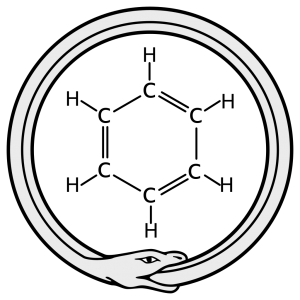- Joined
- Apr 23, 2018
- Messages
- 6,533
Thanks, Jake. I was afraid that was another rambling post.
Here's another route. The Workshop Practice series of books were available on .pdf in our forum library until someone felt hurt and complained that the deceased author's publisher sold the rights to a publication hoarding firm who isn't getting fair profit in exchange for the information, so they were taken down. Good news is I backed them up first. So here is the best writing I've seen geared toward hobbyists about making and baking spindles!
 1drv.ms
1drv.ms
You've got me thinking, obviously. I need a larger TPG for my big lathe, mine's a toy in comparison to one that can run wide wheels. Rather than spending a thousand or more on a ready-made tool, I could get a lot more bang for half my buck building my own. I also enjoy using my tools to make tools that I can use for making better tools. It's an Ouroburos, like Benzene (see pic)!
Here's another route. The Workshop Practice series of books were available on .pdf in our forum library until someone felt hurt and complained that the deceased author's publisher sold the rights to a publication hoarding firm who isn't getting fair profit in exchange for the information, so they were taken down. Good news is I backed them up first. So here is the best writing I've seen geared toward hobbyists about making and baking spindles!
Microsoft OneDrive
You've got me thinking, obviously. I need a larger TPG for my big lathe, mine's a toy in comparison to one that can run wide wheels. Rather than spending a thousand or more on a ready-made tool, I could get a lot more bang for half my buck building my own. I also enjoy using my tools to make tools that I can use for making better tools. It's an Ouroburos, like Benzene (see pic)!


